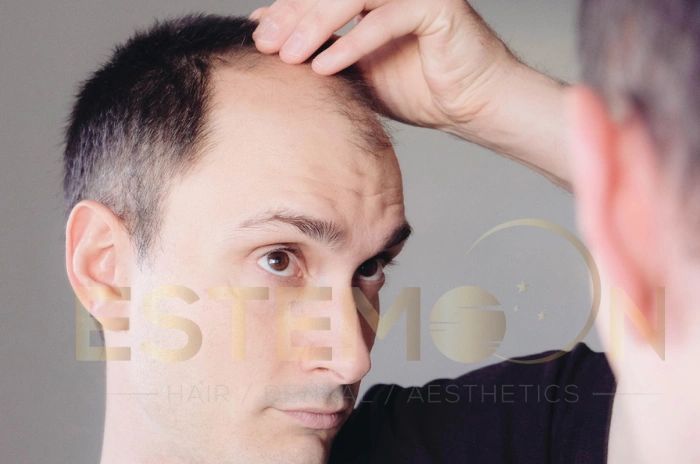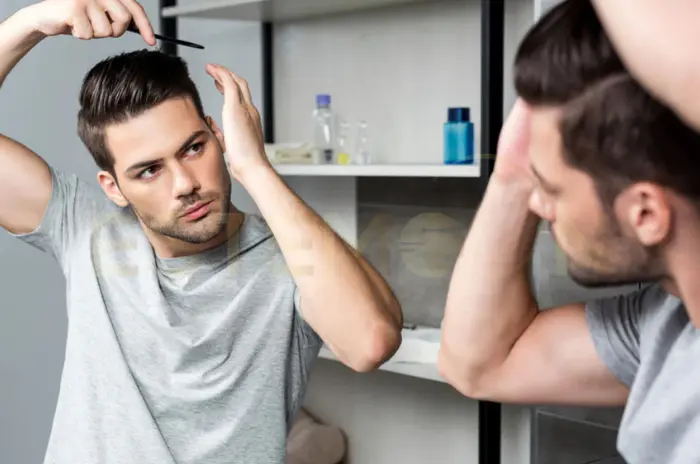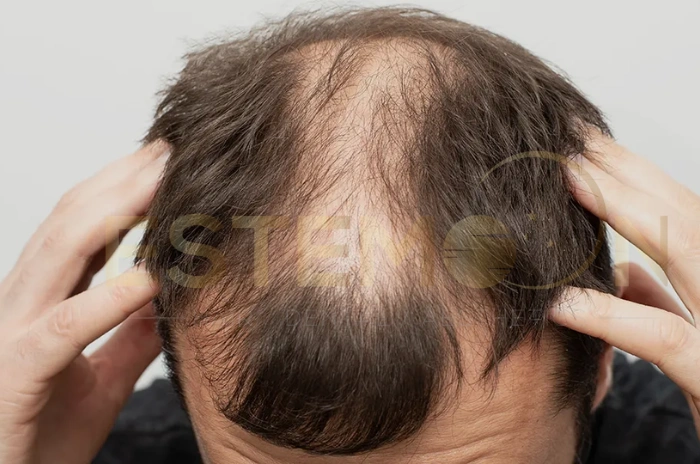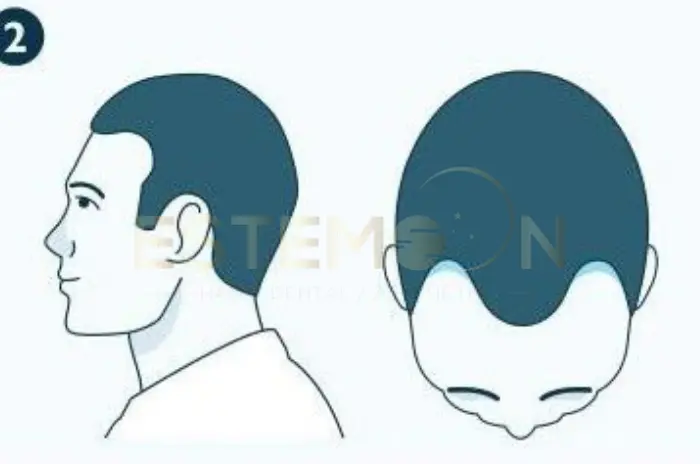Hair thinning affects millions of people worldwide, causing both physical and emotional distress. Whether you’re experiencing thinning hair due to genetics, hormonal changes, or lifestyle factors, understanding the root causes and available treatment options is crucial for maintaining healthy hair and confidence.
This comprehensive guide explores evidence-based thinning hair solutions, from identifying the causes of thinning hair to implementing effective hair thinning prevention strategies. We’ll cover everything from at-home treatments to professional dermatological interventions, helping you make informed decisions about your hair care journey.
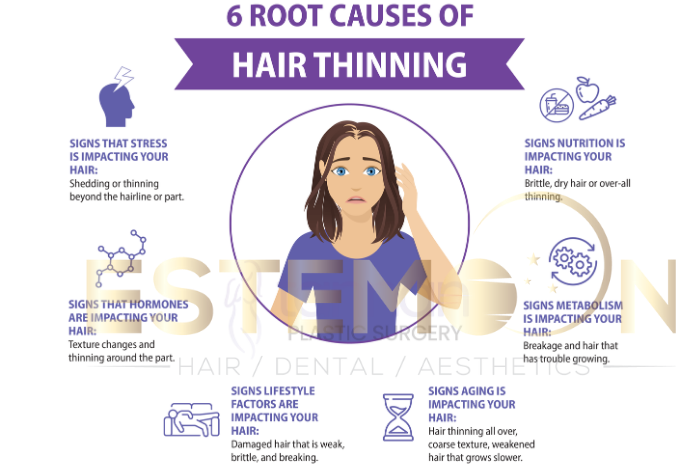
Understanding the Main Causes of Hair Thinning
Thinning hair can result from various factors, with genetics being the most common culprit. Male pattern baldness affects up to 80% of men by age 80, while female pattern hair loss impacts approximately 40% of women by menopause.
Hormonal fluctuations play a significant role in hair thinning in women, particularly during pregnancy, menopause, and thyroid disorders. Dihydrotestosterone (DHT), a hormone derived from testosterone, shrinks hair follicles and shortens the hair growth cycle in both men and women.
| Cause | Prevalence | Affected Gender | Typical Age of Onset |
|---|---|---|---|
| Male pattern baldness | 80% by age 80 | Men | 20-30 years |
| Female pattern hair loss | 40% by menopause | Women | 40-50 years |
| Thyroid disorders | 5-10% | Both | Any age |
| Nutritional deficiency | 15-20% | Both | Any age |
| Stress-related hair loss | 25-30% | Both | Any age |
| Autoimmune conditions | 2-5% | Both | 20-40 years |
Nutritional deficiencies can accelerate hair thinning causes. Iron deficiency, low protein intake, and insufficient vitamin D levels commonly contribute to hair loss. Stress, both physical and emotional, triggers telogen effluvium, causing temporary but noticeable hair shedding.
Medical conditions such as alopecia areata, scalp infections, and autoimmune disorders can cause sudden or patchy hair loss. Certain medications, including blood thinners, antidepressants, and chemotherapy drugs, may also lead to thinning hair.
Best Treatments for Thinning Hair at Home
Several proven at-home hair thinning treatments can help slow hair loss and promote regrowth. Scalp massage increases blood circulation to hair follicles, potentially stimulating growth when performed daily for 5-10 minutes.
Essential oils like rosemary, peppermint, and cedarwood have shown promising results in clinical studies. Mix 2-3 drops with a carrier oil and massage into the scalp before washing. These natural treatments for thinning hair may be as effective as some conventional treatments.
| Treatment Method | Effectiveness | Time to See Results | Cost | Frequency |
|---|---|---|---|---|
| Scalp massage | Moderate | 3-6 months | Free | Daily |
| Essential oils | Moderate | 4-8 months | Low | 3x weekly |
| Hair growth products (biotin) | Good | 2-4 months | Medium | Daily |
| Low-level laser therapy | Good | 4-6 months | High | 3x weekly |
| Dietary changes | Moderate | 3-6 months | Variable | Daily |
| Stress management | Good | 2-4 months | Free-Medium | Daily |
Dietary modifications support healthy hair growth from within. Increase protein intake through lean meats, fish, eggs, and legumes. Include iron-rich foods like spinach and lentils, and ensure adequate omega-3 fatty acids from salmon and walnuts.
Hair growth products containing ingredients like biotin, saw palmetto, and caffeine can complement your routine. While results vary, consistent use for 3-6 months may show improvement in hair density and thickness.
Low-level laser therapy devices for home use emit red light wavelengths that may stimulate cellular activity in hair follicles. These FDA-cleared devices require 20-30 minute sessions several times weekly.
Anti Thinning Shampoo and Scalp Care Routine
An effective anti-thinning shampoo routine forms the foundation of hair thinning prevention. Look for sulfate-free formulas containing ketoconazole, which reduces DHT levels on the scalp and has antifungal properties.
Hair loss shampoo with caffeine, niacinamide, and peptides can improve scalp circulation and strengthen hair follicles. Avoid daily washing, as this can strip natural oils and irritate sensitive scalps experiencing thinning hair.
| Shampoo Ingredient | Function | Best For | Frequency |
|---|---|---|---|
| Ketoconazole | DHT reduction, antifungal | Male pattern baldness | 2-3x weekly |
| Caffeine | Circulation boost | All thinning hair types | Daily use |
| Niacinamide | Scalp health | Sensitive scalps | Daily use |
| Saw palmetto | Natural DHT blocker | Female pattern hair loss | 3-4x weekly |
| Biotin | Hair strengthening | Weak, brittle hair | Daily use |
| Peptides | Follicle stimulation | All hair types | Daily use |
Your scalp care routine should include gentle exfoliation weekly using a soft brush or scrub to remove product buildup and dead skin cells. This promotes better absorption of topical treatments and maintains a healthy scalp environment.
Conditioning treatments are essential for hair thinning in men and women alike. Focus conditioner on mid-lengths and ends, avoiding the scalp to prevent weighing down fine hair. Deep conditioning masks once weekly can improve hair strength and elasticity.
Water temperature matters significantly in your routine. Hot water strips natural oils and can inflame the scalp, while lukewarm water cleanses effectively without causing damage to fragile, thinning strands.

Best Hair Care Practices to Prevent Thinning
Implementing proper hair care to prevent thinning involves gentle handling and protective styling techniques. Avoid tight hairstyles like ponytails, braids, and buns that create tension on hair follicles, potentially leading to traction alopecia.
Heat styling tools should be used sparingly and always with thermal protection products. When blow-drying thinning hair, use the cool setting and maintain distance from the scalp to prevent damage and inflammation.
| Hair Care Practice | Benefit | Frequency | Risk Level |
|---|---|---|---|
| Gentle brushing | Prevents breakage | Daily | Low |
| Heat protection | Reduces damage | When styling | Low |
| Silk pillowcases | Minimizes friction | Nightly | None |
| Regular trims | Prevents split ends | Every 6-8 weeks | None |
| Chemical treatments | Aesthetic improvement | Every 3-6 months | High |
| Tight hairstyles | Quick styling | Avoid | High |
Chemical treatments including coloring, perming, and relaxing can weaken hair structure and accelerate thinning hair progression. If you must use these services, space them out and choose experienced professionals who understand fragile hair needs.
Silk or satin pillowcases reduce friction during sleep, minimizing breakage and tangles. This simple change can significantly impact the appearance of hair thinning in women who often experience more fragile strands.
Regular trimming every 6-8 weeks removes damaged ends and prevents splits from traveling up the hair shaft. While trimming doesn’t affect growth rate, it maintains the health of existing hair and creates a fuller appearance.
How to Manage and Style Thinning Hair
Strategic styling can dramatically improve the appearance of thinning hair while treatments take effect. Volumizing products applied to damp roots before styling create lift and body without weighing hair down.
Texturizing sprays and dry shampoos add grip and thickness to fine strands. Apply these hair growth products to clean, dry hair focusing on areas where thinning hair is most noticeable.
| Styling Technique | Hair Type | Effectiveness | Maintenance |
|---|---|---|---|
| Layered cuts | Female pattern hair loss | High | Medium |
| Textured crops | Male pattern baldness | High | Low |
| Volumizing products | All thinning hair types | Medium | Daily |
| Hair fibers | Severe thinning hair | High | Daily |
| Buzz cuts | Advanced male pattern baldness | High | Weekly |
| Side parts | Mild thinning hair | Medium | Daily |
For male pattern baldness, shorter styles often appear fuller than longer ones. Consider a textured crop or buzz cut that works with natural hair patterns rather than fighting against them.
Hair fibers and concealing powders provide immediate camouflage for thinning hair. These cosmetic solutions bind to existing strands, creating the appearance of thicker coverage until permanent thinning hair treatment options show results.
When to See a Dermatologist for Hair Thinning
When to see a dermatologist for hair loss depends on several factors, but early intervention typically yields better outcomes. Sudden hair loss, patchy bald spots, or losing more than 100 hairs daily warrants professional evaluation.
If at-home hair thinning treatments haven’t shown improvement after 6 months of consistent use, a dermatologist can assess your condition and recommend stronger interventions. They may prescribe medications like minoxidil or finasteride based on your specific type of hair loss.
| Professional Treatment | Success Rate | Cost Range | Side Effects | Treatment Duration |
|---|---|---|---|---|
| Minoxidil | 60-70% | $20-50/month | Scalp irritation | Ongoing |
| Finasteride | 80-90% | $30-80/month | Sexual dysfunction | Ongoing |
| Hair transplant | 90-95% | $4,000-15,000 | Temporary swelling | 6-12 months |
| PRP therapy | 50-60% | $500-1,500/session | Mild discomfort | 3-6 sessions |
| Steroid injections | 70-80% | $200-500/session | Skin thinning | Monthly |
| Laser therapy | 40-50% | $3,000-5,000 | None | 6 months |
Women experiencing hair thinning with irregular periods, excessive facial hair, or other hormonal symptoms should seek medical attention promptly. These signs may indicate underlying conditions requiring targeted treatment.
Scalp inflammation, itching, or visible irritation accompanying thinning hair suggests possible infection or dermatological condition. Professional diagnosis ensures appropriate treatment and prevents further damage.
A dermatologist can perform trichoscopy, blood tests, and other diagnostic procedures to identify the exact causes of thinning hair in your case. This information guides personalized hair loss treatment plans with higher success rates.
Advanced treatments like hair transplant procedures, platelet-rich plasma therapy, and prescription medications are only available through qualified medical professionals specializing in hair restoration.
FAQs About Thinning Hair Solutions and Dermatologist Advice
What are the main causes of hair thinning?
The primary causes of thinning hair include genetics, hormonal changes, nutritional deficiencies, stress, medical conditions, and certain medications.
What at-home treatments can help thinning hair?
Effective at-home hair thinning treatments include scalp massage, essential oils, dietary improvements, hair growth products with biotin, and low-level laser therapy devices.
When should I see a dermatologist about hair loss?
You should consult a dermatologist when to see a dermatologist for hair loss if you experience sudden hair loss, no improvement after 6 months of home treatment, or accompanying scalp symptoms.
What is the best anti-thinning shampoo routine?
The optimal anti-thinning shampoo routine involves using sulfate-free formulas with active ingredients like ketoconazole, washing every other day, and incorporating weekly scalp exfoliation into your scalp care routine.
Follow us on social media for updates, tips, and patient success stories:

